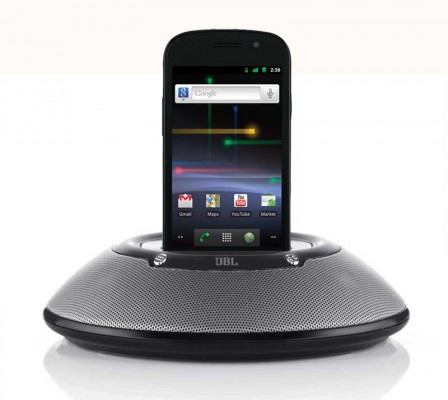 Apple and Google are currently battling a war over your pocket. And while each smartphone OS has its strengths and weaknesses, there is one weapon that Apple has with the power to decimate its Google enemies – the accessory market. It’s time for Google to fight back.
Apple and Google are currently battling a war over your pocket. And while each smartphone OS has its strengths and weaknesses, there is one weapon that Apple has with the power to decimate its Google enemies – the accessory market. It’s time for Google to fight back.
No matter what type of iPhone you have, you can rest assured that vast majority of the iAccessories you decide to buy – whether it be a speaker dock, an alarm clock, a portable charger, an IR transmitter or even just a simple charging cradle – will work with your iPhone (or iPod, for that matter). Those that don’t work are probably limited by Apple constantly changing the standard rather than there being an issue with the iDevice fitting the iAccessory.
Now compare that to the Android platform. Google’s openness when it comes to Android may allow manufacturers to create a wonderful variety of differently designed hardware, but that same openness means that there cannot be a universal accessory market for the platform.
The thing is, it probably wouldn’t be too hard for Google to make this change. All Android phones coming out now have a MicroUSB port for charging and connecting to a PC via USB. But the location of the port is far from universal – while some phones like the Nexus S have it dead centre on the bottom, others are slightly off centre while others have the port on the side of the phone.
Google needs to take control of the MicroUSB port’s positioning. By making it mandatory for all Android handset makers to place the port in the same place on the phone and dictating a maximum dimension for phones (width and depth, in particular), it could open the door for accessory manufacturers to begin creating custom designed peripherals for all Android devices, instead of just particular models.
Look at how iPhone speaker docks come today – each model has the basic 30-pin connector sticking up from the body of the speaker somewhere, but most come with a pack of custom plastic moulds that fit into the body to create a perfect fit for the iPod or iPhone you’re using.
The exact same approach could be used to accommodate the variety of shapes found in Android phones, so long as the important bit – the connection – was universally located in the same spot.
Not only is this a great move for consumers, allowing them to enjoy their Android devices in even more ways, it can also be a boon for Google and their partners. By creating a certification for Android accessories – think “Made for iPhone” with a little green man – they could both charge accessory makers for the certification as well as incentivising handset manufacturers to share in that revenue by becoming a certified partner.
This isn’t an overnight change. Already manufacturers are developing handsets to be released not just in the coming months, but next year and beyond. Which is all the more reason that Google needs to step up and take responsibility by mandating the positioning in future handset versions and offering the incentive of a robust accessory market to accompany their platform. Because if they don’t, regardless of the number of software advantages Google holds over Apple, Cupertino will always be able to drop the Accessory-bomb on them.